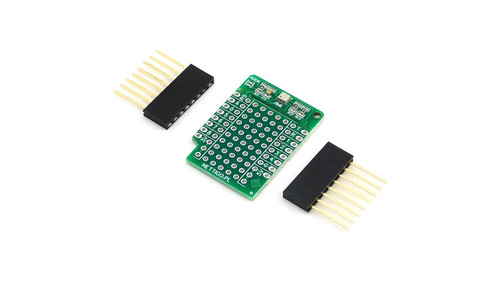Recently added
More...Categories
Suppliers
Newsletter
Once, twice in month we will send You info about new products, products on sale and news from Arduino and DIY world.
BME680 Wemos D1 mini shield - improved version
Shield dedicated for Wemos D1 mini and mini Pro modules. On-board Bosch Sensortec BME680 sensor measuring temperature, pressure, humidity and concentration of volatile organic compounds (VOC). All this allows you to calculate the IAQ (Indoor Air Quality) factor. Improved design
Our health depends on the air we breathe!
Bosch BME680 to the rescue -shield for Wemos D1 mini.
In Nettigo, nothing is an accident. When the next heating season began, and thick clouds began to float, my eyes began to call for help. The correlation was simple -redness and tearing always appears in my autumn, when the heating season begins, and none of the known plants are dusty anymore. It is not allergy, but incinerated waste, coal, etc. Popularly called smog. Everyday SDS011 air cleanness sensor embedded in Nettigo Air Monitor informed me about increased pollination. But until now I had no idea how it translates into my health. And I really do not like not to know. If there was a problem, a solution had to be found.
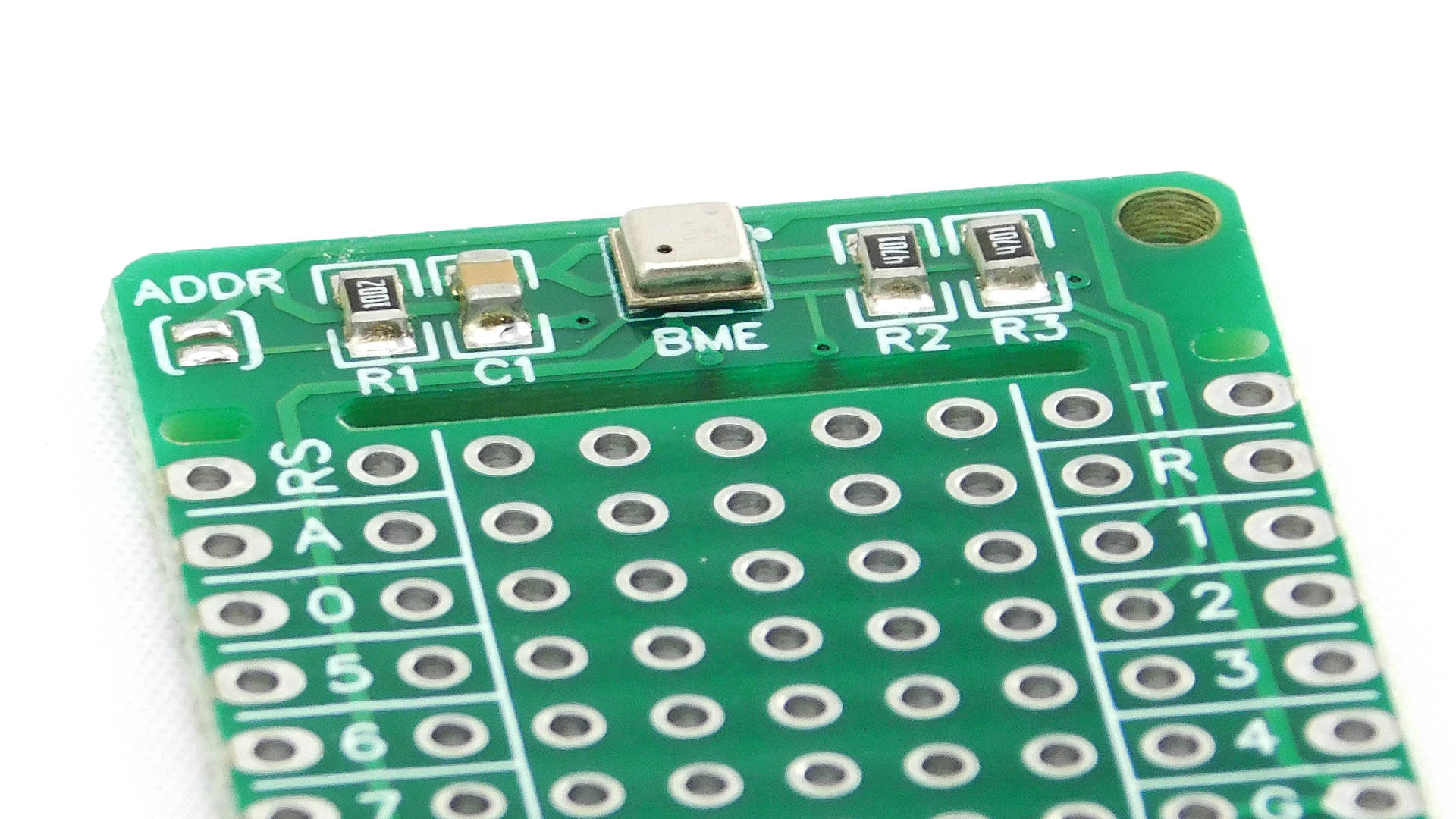
This time, we decided to build an intelligent wireless thermostat that would examine the air quality we breathe every day. The latest sensor from Bosch seemed perfect for this purpose. BME680, because of it, is nothing but BME280 on steroids. We still do not know how, by the miracle, Bosch covered the temperature, pressure, humidity and ** volatile organic compounds (VOC) sensor on the surface of 2.5 x 2.5 mm **. But since he did it and it works sensational, we decided to use it. In this way, an extension to the popular WiFi tile based on [ESP8266] was created (/products/tagged/esp8266).
A few words about the sensor itself
The BME680 is an interesting sensor because in addition to standard environmental data it also measures the concentration of the already mentioned volatile organic compounds. We will not divorce how exactly it works, because we do not know each other on spectrophotometry. In a big simplification, VOCs are airborne substances whose higher concentration can cause adverse effects and be very harmful to health. And VOC can be found, among others, in paints (eg formaldehydes), varnishes, cleaning agents, furniture, office equipment, adhesives, alcohol. It can be exchanged for a very long time. Among them, we find such pearls as acetone, dichlorobenzene and ** carbon monoxide ** known to us as chad. For a full list, please refer to Wikipedia.
BME680 in short:
- Is able to accurately measure:
- Temperature
- Pressure
- Humidity
- Resistance of gases (volatile organic compounds)
- Based on the above measurements, Bosch software can count the IAQ index
- Reacts to substances dangerous for health
IAQ index
Based on the measurements Bosch software it is able to calculate and give us the IAQ (Indoor Air Quality factor) -that is, the air quality in the room.
IAQ is a number that easily informs us about the quality of air we breathe:
| Value | Air quality | Description |
|---|---|---|
| 0-50 | Good | Air quality widely recognized as satisfactory. Air pollution at this level has little or no effect on health |
| 51-100 | Moderate | Air quality is acceptable for most people. However, the most sensitive group of the population may feel discomfort |
| 101-150 | Poor | There may be negative health effects in a sensitive part of the population . The greater part of the population should feel relatively good |
| 151-200 | Unhealthy | The whole population is beginning to experience negative health effects. In the most sensitive part of the population, this level can be very dangerous to health |
| 201-300 | Very & nbsp; unhealthy | Staying in such conditions can result in serious the health consequences of the total population |
| 301-500 | Harmful | Serious health risk. Being in such conditions is definitely harmful to health |
| 500+ | Toxic | Under such conditions it is impossible to live. It is unhealthy, dangerous, unreasonable and a few non-. We recommend moving out of Beijing |
What does this mean in practice?
It’s easy. The higher the number the worse! Starting from the orange level, the first symptoms of being in an unhealthy environment may appear. Everyone reacts a bit differently. You have to be aware that what we breathe has a huge impact on how we feel.
The list of possible ailments is very long. Starting from the irritation of the nose and throat, runny nose, cough, burning eyes, itchy skin, redness through throat and ear infections, bronchitis, lungs, sinuses, to memory loss, blurred vision, chronic headache, dementia, pulmonary function disorders, on depression ending.
The higher the level of the IAQ index, the worse for us. In practice, being in rooms with IAQ above 150 will be reflected in the state of our well-being and health. It will also be associated with an increased risk of disease. The quality of our life depends largely on the air we breathe.
It was medically, now technically
Specification BME680:
- Measuring range (full accuracy):
- Pressure: 300 -1100 hPa
- Humidity: 0 -100%
- Temperature: -40 -85C
- Interfaces of the system: I2C and SPI
- Average energy consumption for measurements every 1s:
- 2.1 μA (humidity, temperature)
- 3.1 μA (pressure, temperature)
- 3.7 μA (humidity, pressure, temperature, VOC)
- Average energy consumption in sleep mode: 0.15 μA
- Gas sensor (volatile organic compounds/VOC):
- Response time (τ33-63%): <1 s (for new sensors)
- Data processing: the ability to calculate IAQ
- Humidity sensor:
- Response time (τ0-63%): 8s
- Accuracy: ± 3% relative humidity
- Hysteresis: ≤ 1.5%
- A pressure sensor:
- RMS noise: 0.2 Pa (corresponds to 1.7 cm)
- Measurement error: ± 0.25% (corresponds to 1 m for 400 m height changes)
- Displacement of the temperature coefficient: ± 1.5 Pa/K (corresponds to ± 12.6 cm at 1 ° C temperature change)
Module specification:
- The extension fits:
- Wemos D1 mini V2
- Wemos D1 mini Pro
- Wemos D1 mini lite V1
- Wemos D1 mini V3
- Communication interface: I2C
- I2C address: default 0x77 (0x76 after soldering the jumper)
- Connection to Wemos:
- D1 -I2C SCK
- D2 -I2C SDA
- Power supply: 3.3V
- Logic: 3.3V
- Prototype field: 5x10 in 2.54 mm pitch
- Additional signal and power output for easy prototyping
Included:
- 1 pc x Extension module (shield) with BME680 sensor (module version 1.1a)
- 2 pcs x grommet connector, 8 pin
Notes on use and installation
The product being sold is an updated version available for some time in our offer yellow module MOD-1272.
In the new version:
- we have reduced the heat propagation of Wemos-BME680
- we have significantly increased the prototype field from 4x6 to 5x10
- we placed the address jumper in the corner to make it easier to solder
- we added the ability to separate the sensor from the main PCB
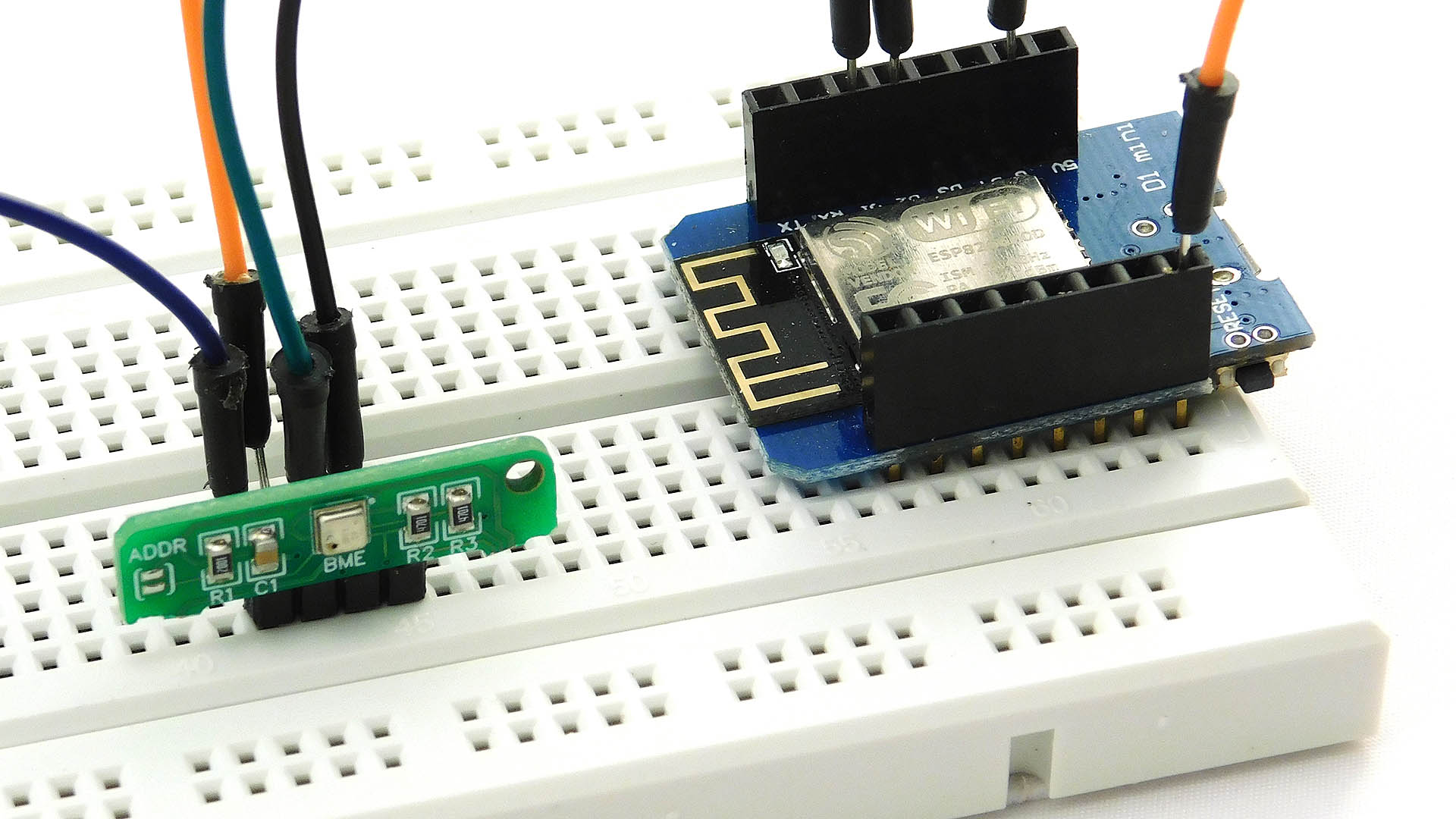
- ESP8266 on board The Wemosa D1 mini is a small “oven”. During continuous operation and operation, WiFi warms up so much that it can over-inflate temperature readings by up to several degrees. The extension PCB is built in such a way that the propagation of heat from Wemosa to the sensor is as small as possible. But you have to take into account that the temperature near ESP will be overstated anyway. We recommend placing the shield as far as possible from Wemosa or using the ESP8266 energy/sleep saving mode to reduce the heat emitted.
- To reduce the influence of ESP on the readings, you can cut off the sensor board, solder the JST XH cables/sockets/the golpin strip on the back and connect the sensor on the cables.
- At the moment the IAQ index is able to count only binary insertion from Bosch. It is part of the BSEC software. The ESP8266, RL78 and ARM_CORTEX platforms are supported.
Heat propagation in diagrams
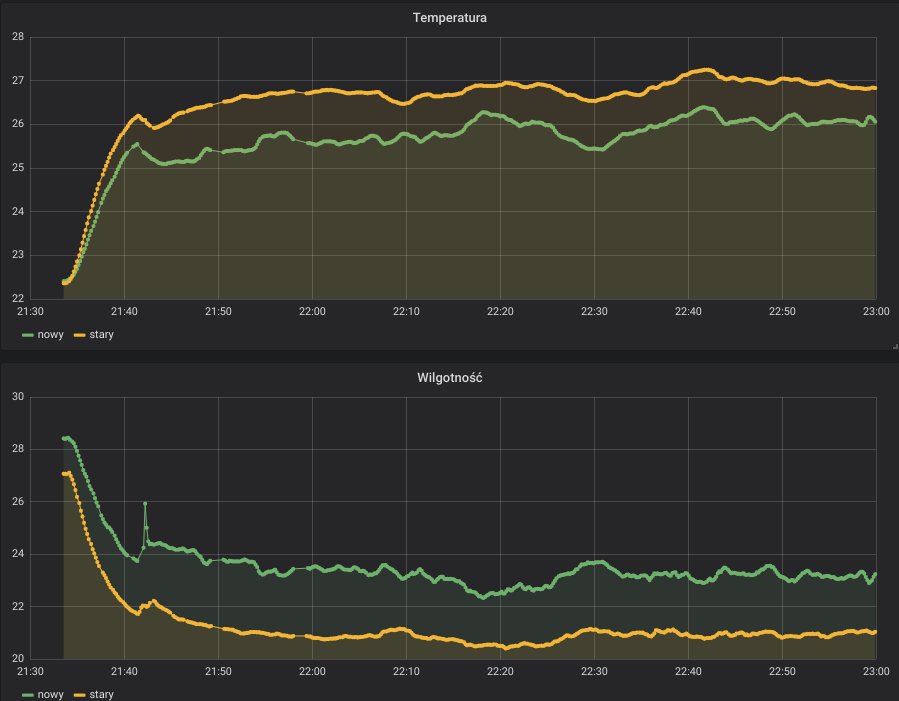
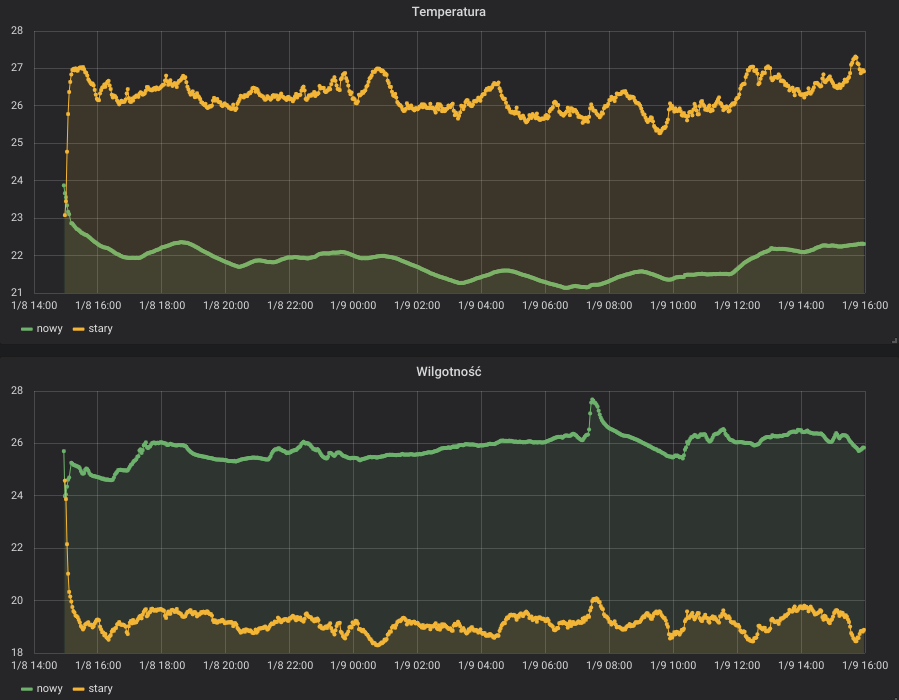
Recently added
More...Categories
Suppliers
Newsletter
Once, twice in month we will send You info about new products, products on sale and news from Arduino and DIY world.












